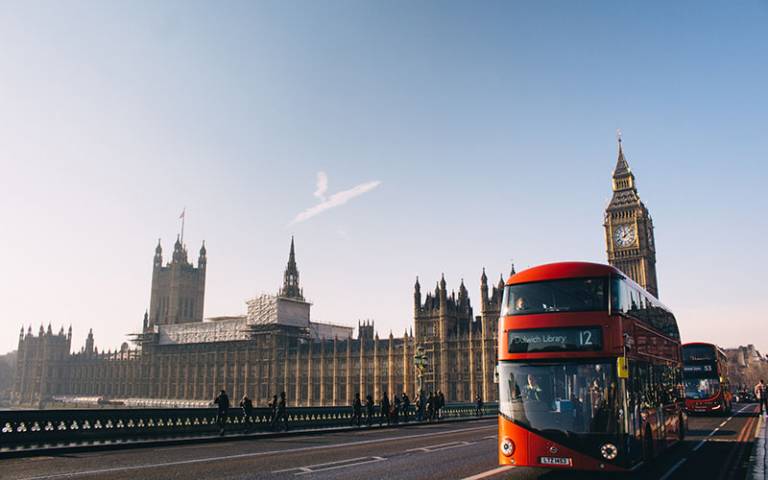Tracking pollution at street level
For the past decade, UCL has been actively engaging local communities in the monitoring of air quality where they live and work.

3 October 2018
This Citizen Science approach to generating and sharing knowledge has largely been achieved through the social enterprise Mapping For Change (MfC).
MfC was co-founded by Muki Haklay, Professor of Geographic Information Science and the director of the UCL Extreme Citizen Science research group. The social enterprise works with communities to monitor pollution levels, raise awareness of the issue and create positive sustainable transformations in their immediate environment.
Louise Francis, Co-Founder and Managing Director of MfC, explained: "The aim is to support communities and to give them a voice. We do this though the power of mapping."
For example, a group of residents at the Barbican Estate in Central London took part in a year-long MfC project to map pollutions levels, primarily through the use of fixed diffusion tubes (17 were utilised around the estate) and mobile particle monitors.
Readings revealed levels of nitrogen dioxide that were sometimes far above EU safety limits. Residents also spoke of a black dust that regularly gathers on shelves and window ledges in their apartments.
Information gathered from the readings fed into UCL’s research programmes and provided evidence for local authorities about the scale of the problem. It also left residents better informed about actions they could take in their own lives to minimise exposure to pollution. One resident, for instance, decided to avoid walking in Beech Street tunnel wherever possible, after a particularly high pollution reading was registered there.
MfC’s Barbican project was welcomed by representatives of the City of London Council, and by Simon Birkitt, director of Clean Air in London, who described it as “the best project of its kind that I’ve seen.” Subsequently, similar projects have been undertaken in other areas of London, including Marylebone, Brentford and Lambeth.
Louise says she's encouraged by the number of community groups “not only wanting to participate, but also initiating projects”. The more people who participate, she suggested, the more they become aware of the issue of air quality. It encourages them to think about what measures they can take at a local level, and how they can get involved in the wider, decision making process.
In July this year, Professor Haklay chaired a Clean Air Design Day in Euston. The event brought together members of the Camden Clean Air Partnership, which includes local residents’ groups, schools, hospitals, businesses, construction companies, local councillors and cab drivers. This collective of diverse people are working together to co-design a new air quality plan for the borough, improving the borough and lives of those that live, work and study here.
It is anticipated that the action plan, which forms part of the council’s Camden 2025 agenda, will be in place by the end of 2018.
Further information
For more information about MfC, visit the Mapping for Change website.
Read more about how UCL is helping Londoners breathe easy or browse all case studies.
 Close
Close

